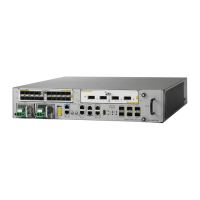Table 13: show Commands to Display Modular Port Adapter (MPA) Information
Type of Information ProvidedCommand
Router’s running configuration and interfaces available in the system.show running-config
Router’s installed linecard and modular port adapter (MPA) type, slot,
and state information.
show platform
Modular port adapter (MPA) type in that slot, number of ports, hardware
revision, part number, and EEPROM contents.
show diag
FPD version information of modular port adapters (MPAs) in the
system.
show hw-module fpd location
<rack/slot/subslot>
Cisco IOS XR software version, names and sources of configuration
files, and boot images.
show version
Table 14: show Commands to Display Modular Port Adapter (MPA) Information
ExampleType of Information ProvidedCommand
show controllers
GigabitEthernet 0/0/1/1
Network link status, register contents, and controller chip
errors.
show controllers type
rack/slot/subslot/port
show interfaces
GigabitEthernet 0/0/1/1
Line status and data link protocol status for a particular
modular port adapter (MPA) port. Statistics about data traffic
sent and received by the port.
show interfaces type
rack/slot/subslot/port
show diag 0/0/1Modular port adapter (MPA) type in that slot, number of
ports, hardware revision, part number, and EEPROM
contents.
show diag rack/slot/subslot/
show versionCisco IOS XR software version and boot images.show version
Using the ping Command to Verify Network Connectivity
The ping command allows you to verify whether a modular port adapter (MPA) port is functioning properly
and to check the path between a specific port and connected devices at various locations on the network.
After you verify that the system and the modular line card (MLC) have booted successfully and are operational,
you can use the ping command to verify the status of the MPA ports. See the Cisco ASR 9000 Series
Aggregation Services Router Getting Started Guide and the Cisco ASR 9000 Series Aggregation Services
Router Interface and Hardware Component Configuration Guide for more information on bringing up and
configuring the Cisco ASR 9000 Series Router and the Cisco ASR 9000 A9K-MOD80G-H.
The ping command sends an echo request out to a remote device at an IP address that you specify. After
sending a series of signals, the command waits a specified time for the remote device to echo the signals. Each
returned signal is displayed as an exclamation point (!) on the console terminal; each signal that is not returned
before the specified timeout is displayed as a period (.). A series of exclamation points (!!!!!) indicates a good
connection; a series of periods (.....) or the messages [timed out] or [failed] indicate that the connection failed.
This is an example of a successful ping command to a remote server with the IP address 10.1.1.60:
Cisco ASR 9901, ASR 9001, and ASR 9001-S Routers Hardware Installation Guide
84
Installing Modules and Cables in the Chassis
Using the ping Command to Verify Network Connectivity

